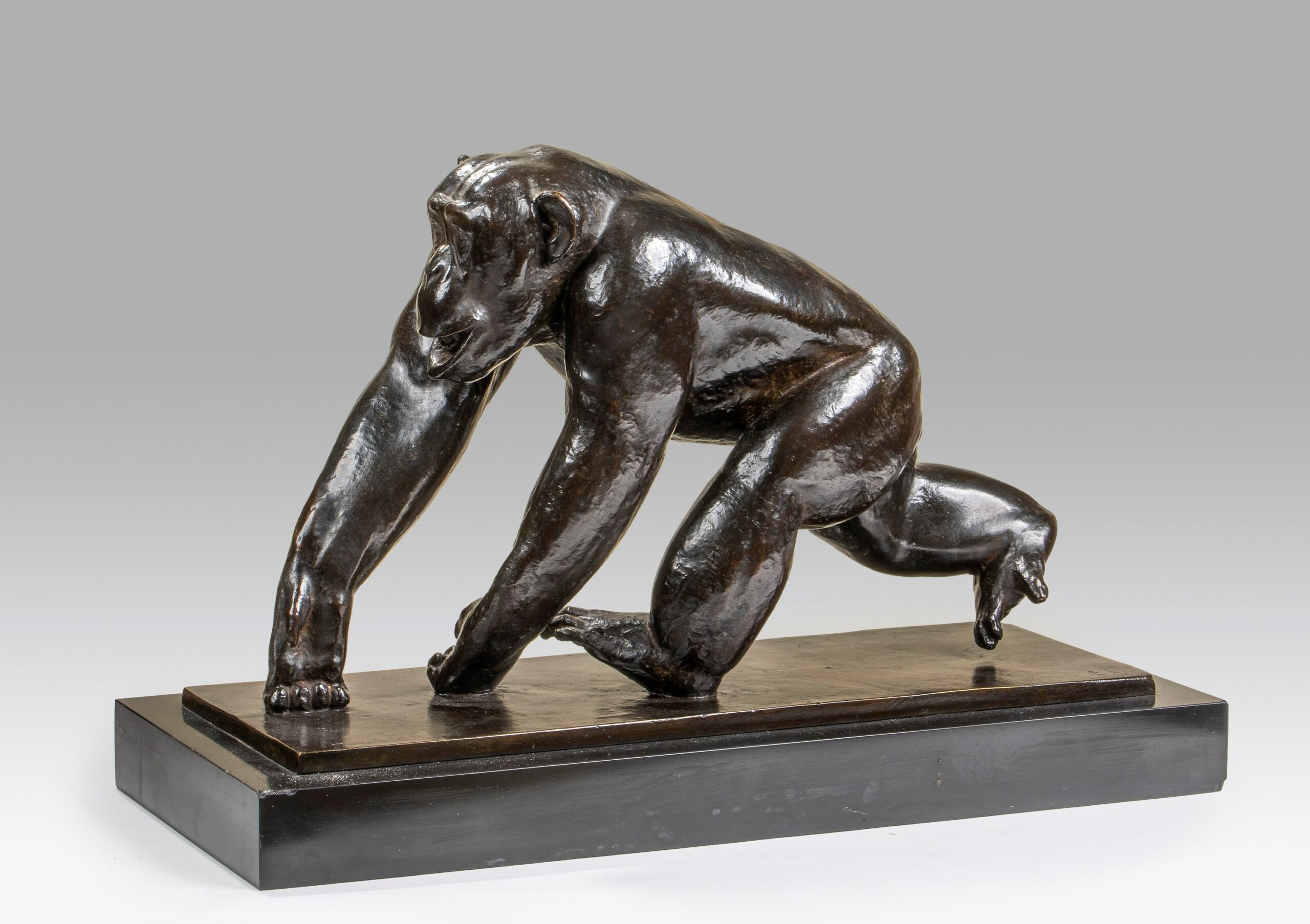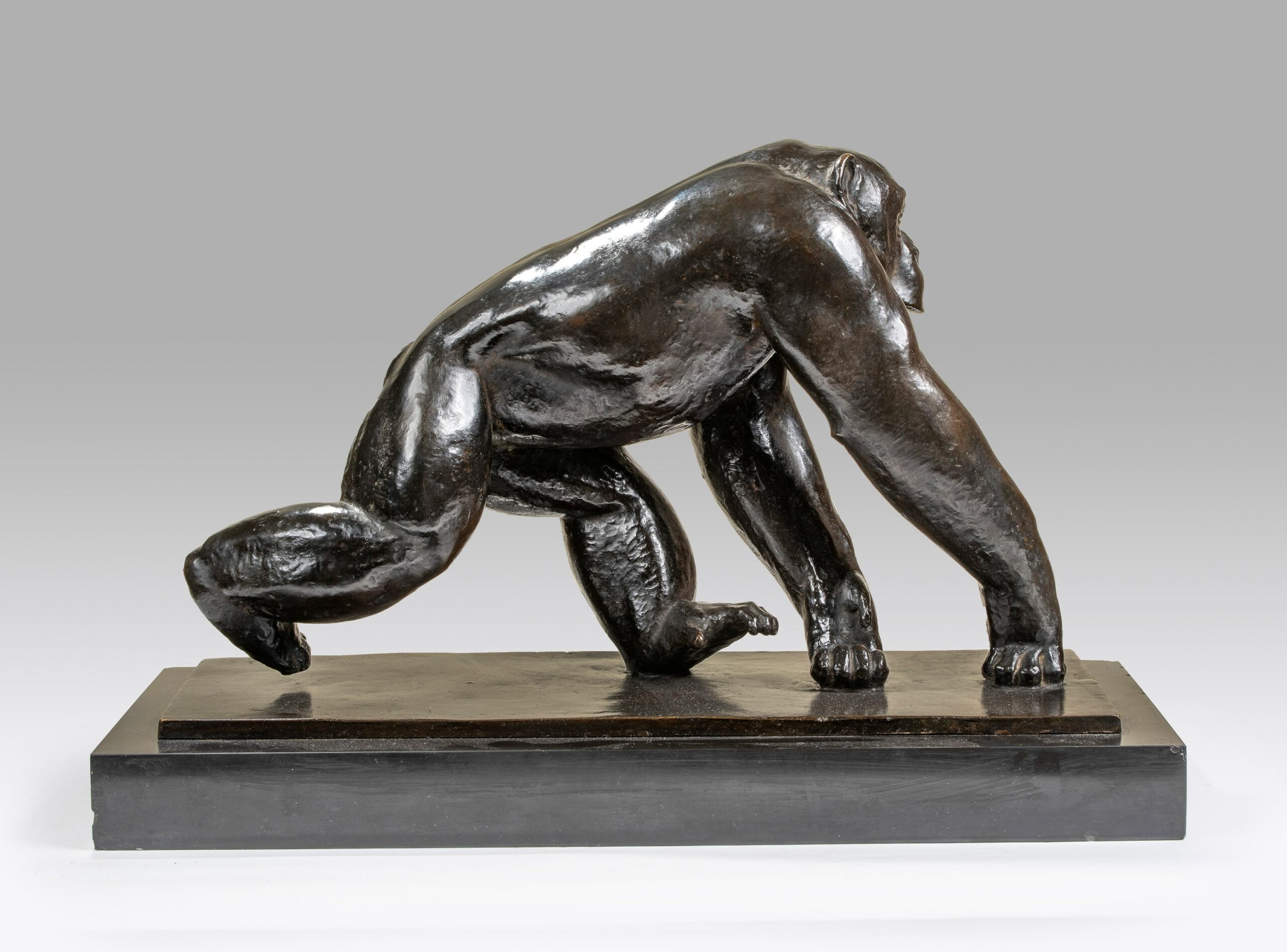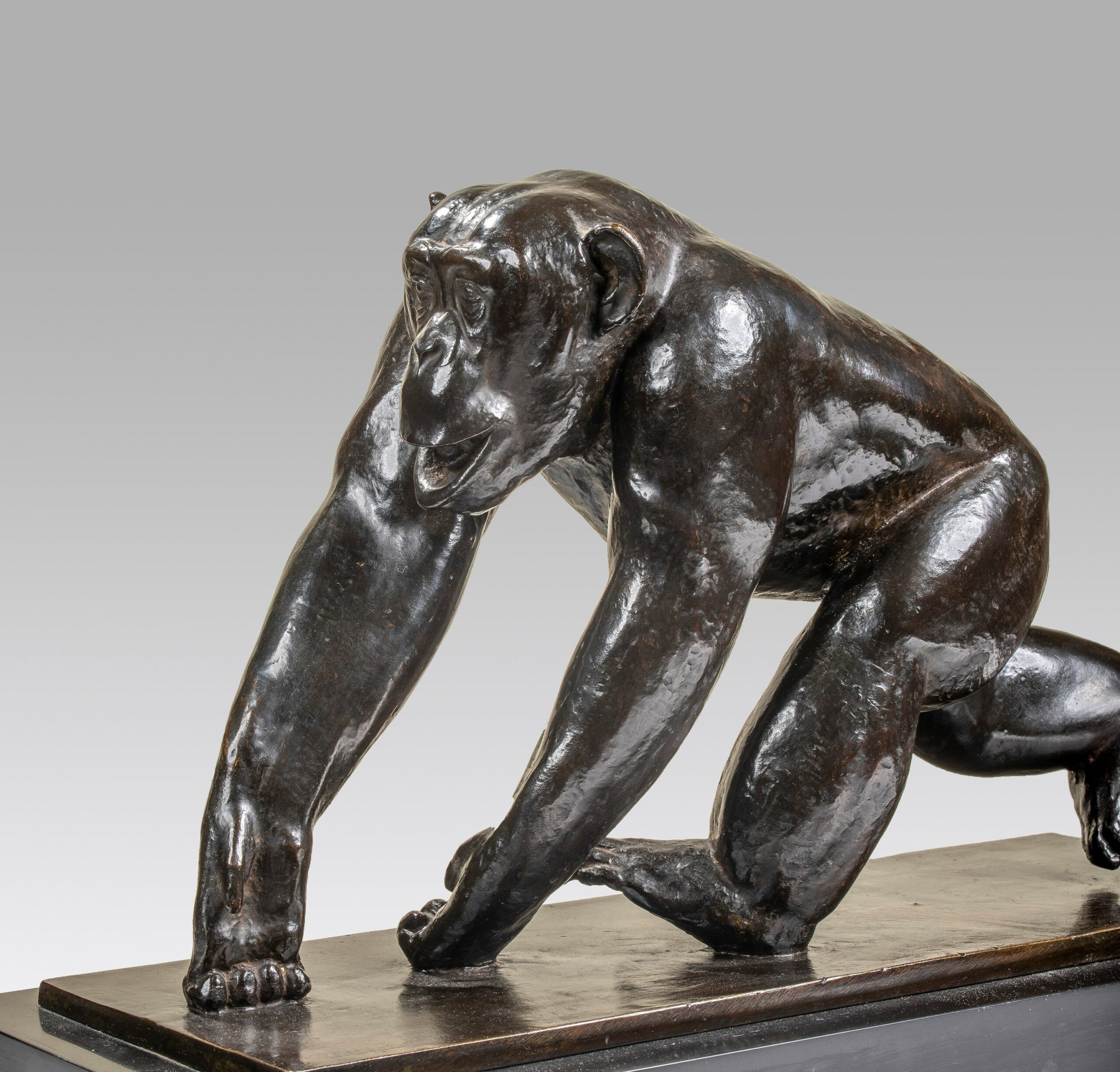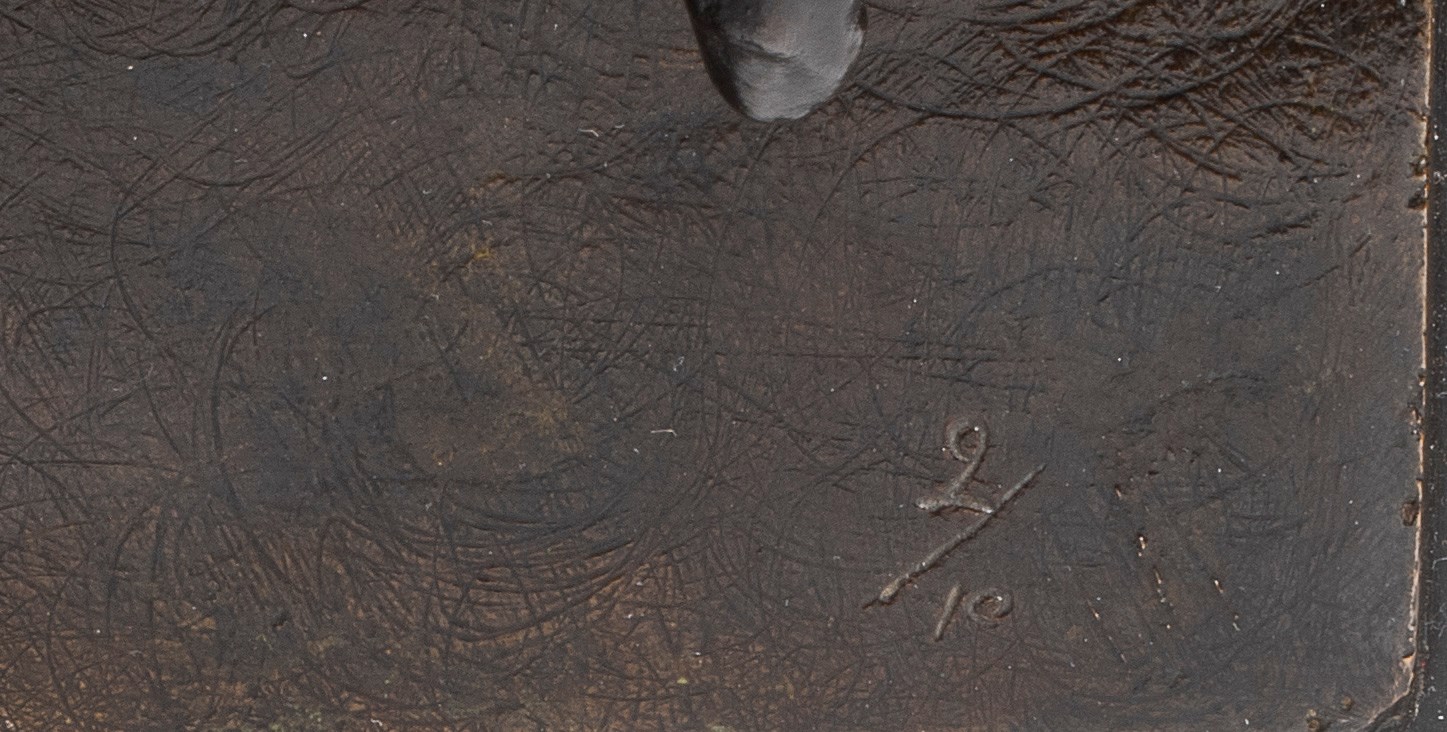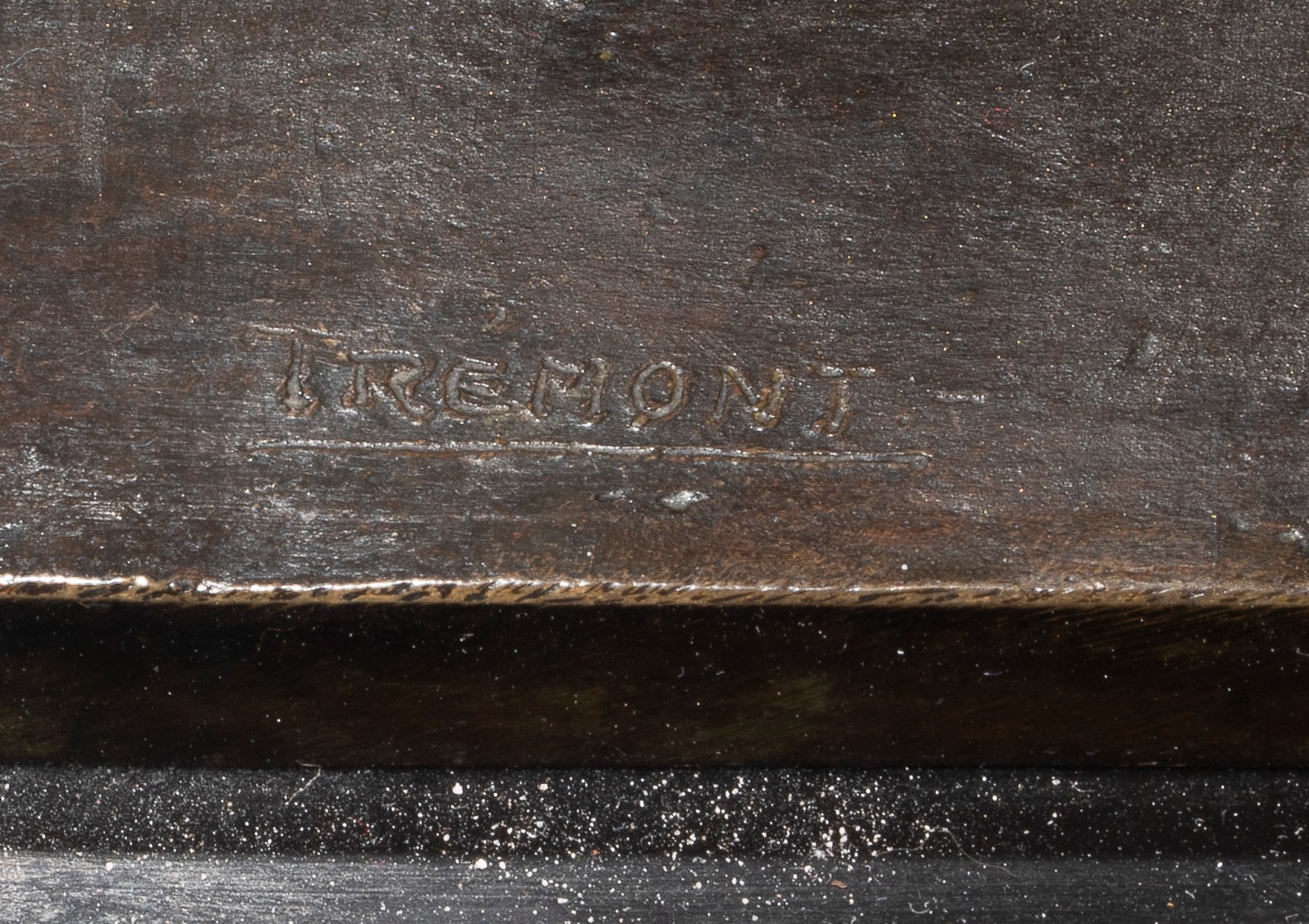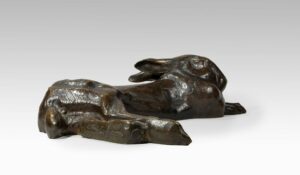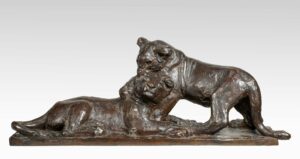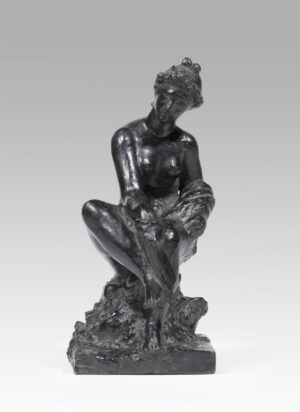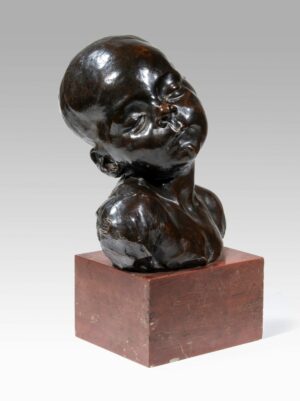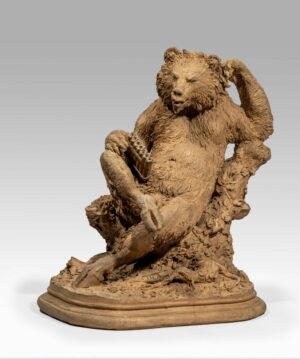Description
The chimpanzee is a particularly outstanding sculpture of Auguste Trémont’s work as it was the first to have been cast in bronze. It is due to the generosity of a physician, Dr Schneider who, during the 1924 summer, came across the model of a Chimpanzee the artist had made in clay and encouraged Trémont to cast it in bronze, offering to bear all relating expenses. Only two original models in bronze have been inventoried so far : the first one currently housed by the Musée National d’Histoire et d’Art du Luxembourg known as the Bouncing chimpanzee and our sculpture, numbered 2, which was displayed at the 1927 Salon de la Sécession in Luxembourg.
André Trémont here features a remarkable model of a chimpanzee walking, of which he captured masterfully the imposing stride while bringing out its character and impressive presence. Most representative of the artist’s style, this model also came in a smaller version, in glazed stone by the Manufacture de Sèvres.
To the question as to why he became an animal sculptor, Auguste Trémont answered: ‘because it was the most difficult’.

